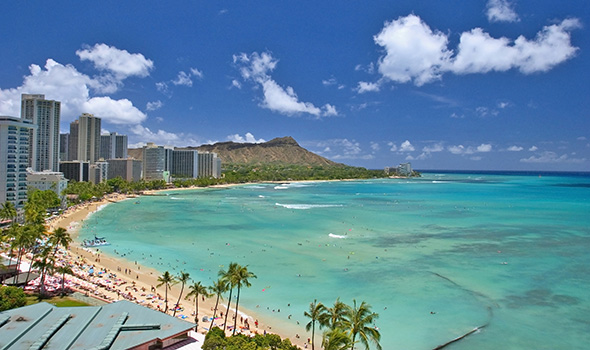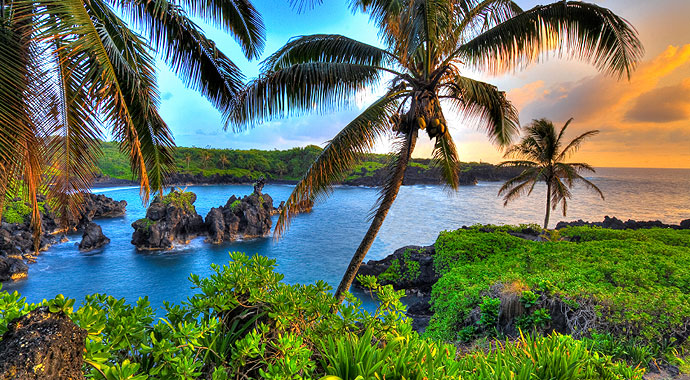History of Hawaii – The 50th and last state to be admitted to the Union, in 1959, it is also the only U.S. state not on the North American continent. Hawaii consists of eight major and many smaller island s approximately 2,100 mi SW of San Francisco. Hawaii Island is the largest; Oahu is the most populous and the most important economically. The island s are of volcanic origin; there are still large active and inactive volcanoes. The land is fertile, the climate mild. The name “Hawaii” is probably derived from a native word for homeland . Honolulu on Oahu is the capital and largest city. The first known inhabitants were Polynesian voyagers from the South Seas, who made their final migration c. a.d. 750. Captain James Cook, the British explorer, was the first European to visit the island s, in 1778. He named them the Sand wich Island s for the earl of Sand wich. At that time there were several warring kings, but in 1810 Kamehameha I became sole ruler and brought peace and prosperity. He was hospitable to Americans who were engaged in whaling and in the China trade. However, diseases carried by Europeans caused the population to decline. Christian missionaries from the United States arrived in 1820.
Sugar-cane Growing in Hawaii:
Sugar-cane growing was introduced in the 1830s, and Hawaiian sugar was given a favored position in the U.S. market. The resulting need for more labor in the cane fields brought many Asians. Kamehameha III in 1839 established religious freedom and set up a constitutional monarchy with an American, C.P. Judd, as prime minister from 1842 to 1845. The United States recognized Hawaii’s independence in 1842 and in 1887 received the right to establish a naval base at Pearl Harbor. Queen Liliuokalani, who became ruler in 1892, was overthrown in 1893 during agitation for governmental reform, led by Americans. The U.S. minister took it upon himself to declare Hawaii a protectorate of his country, but a treaty to annex the island s was withdrawn from the Senate by President Grover Cleveland . He believed it was the sugar industry rather than the people who wanted annexation. In 1894, therefore, those in power established a republic, with Sanford B. Dole as president. President William McKinley, unlike his predecessor, favored annexation, and this was concluded in 1898. Hawaii was made a territory in 1900.
Strong Tourism Industry in Hawaii:
On December 7, 1941, a surprise Japanese attack on Pearl Harbor, a major U.S. base, plunged the United States into World War II. Hawaii then became the nation’s chief forward bastion for prosecution of the Pacific war. After the war the attempt of labor unions to improve conditions caused major strikes in 1946, 1949, and 1959. The postwar era also brought more tourists as air travel became practical. Visitors found a land of great cultural and ethnic diversity: native Hawaiians, mainland Americans, both black and white, Filipinos, Koreans, Portuguese, Germans, Japanese, Puerto Ricans, and Chinese. By the 1960s the continuing growth of business and the increase in tourism caused problems of overcrowding and threatened damage to the beauty of this “paradise of the Pacific.” Hawaii continues to prosper due to its strong tourism industry and its location as the crossroads of the Pacific.






